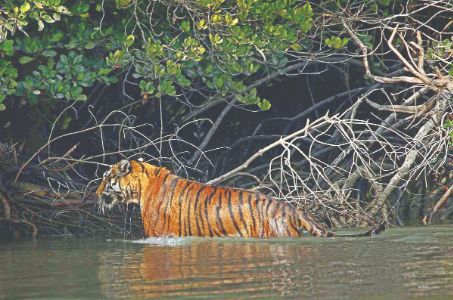Sundarban and its majestic beast

Climate change has severely threatened biodiversity worldwide with many species already on the verge of extinction and is responsible for warmer temperatures, changing rainfall patterns, and more frequent extreme weather events. Climate change has already caused changes in vegetation, salinity and sedimentation in the Sundarbans — an iconic ecosystem and home to the Royal Bengal Tiger. Sea level rise (SLR) has further aggravated the loss of biodiversity and wildlife habitats particularly in coastal low-lying regions. The mean elevation of most of the Sundarbans is less than one meter (m) above sea level, making it also highly vulnerable to SLR. The combined effect of climate change and SLR is also the major cause of deforestation in the world. The Sundarbans, located in the north-eastern shores of India, is the world's largest contiguous mangrove forest spreading across approximately 9,630 square kilometres, of which, 5,363 square kilometres is reclaimed area and 4,267 square kilometres are protected mangrove forests. Another 6,000 square kilometres of contiguous mangrove forests are spread across neighbouring Bangladesh. Sundarbans is the most important biologically protective and taxonomically diverse ecosystem of the Indian Subcontinent. The entire area is a conglomeration of river channels, creeks and islands — about 102 islands are reported. Among them, 54 islands are inhabited and 48 islands are forested. The name "Sundarban" is, as reported, derived from the abundantly growing mangrove trees, locally called 'Sundari' (Heritiera fomes). The region is also home to a large number of threatened and endemic species, making it critical for integrated assessment and planning for effective conservation in the context of climate change and associated events.
.

